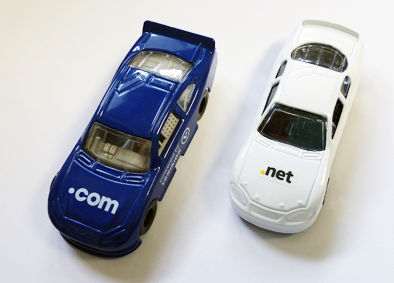Does the Genesis of a TLD Matter?


Verisign, the registry operator of .com and .net (as well as others including .tv, .cc and .name) have a page on their website called, “What does .com Mean?“. It’s an easy read and looks back at the history of .com.
A few sections of the page I found especially interesting in light of the naming, applications and awarding of new gTLDs:
While we know that the first .com was assigned to symbolics.com on March 15, 1985, the genesis of .com is less clear. According to Craig Partridge, chief scientist at Raytheon BBN Technologies, the name for domains evolved as the system was created. At first, .cor was proposed as the domain for corporations, but when the final version came out it was switched to .com.
What would the implications be, to have a .cor (meaning “corporations”) instead of a .com?
My guess is that .net may have been more successful as the generic nature of the TLD may have been more attractive than the pigeon holing of corporations into a “.cor”. With .org being initially for non-profits (never enforced and later removed) a certain amount of limiting the name space happened in the early days because of these decisions.
Jack Haverty, an Internet pioneer at MIT, said they weren’t really thinking about business when they were developing the top-level domains. “I think .com originally was derived from “company” rather than “commercial.” The .com’s weren’t thought of as “businesses” in the sense of places that consumers go to buy things,” he wrote in an email. “They were companies doing government contract work. The Internet was not chartered to interconnect businesses—it was a military command-and-control prototype network, being built by educational and governmental entities, and contractors.” Still, they seemed to understand that some kind of commerce was coming.
Rick Schwartz, once described .com as “The World’s Greatest Ever Franchise”. Although not all of the 120 million registered .com domains have websites built on them, those that do are effectively a franchisee of the .com brand. Rick was correct. And it could have been the .cor/.org/.net brand if one of those became the de facto standard.
Obviously .com has been hugely successful and isn’t going away. Because of being the main player in town, with little to no competition, it did an incredible job of helping people adopt the internet and understand how to get online. It kept things simple.
Domain names, web browsers and search engines, directories and even internet connections back then were all in their infancy and were complicated enough. Internet users had to overcome issues with connecting to the web and accessing sites and finding what they were looking for. Looking back it was a fun and mystical time when some days you didn’t know what you might find – but let’s get online anyway!
So in that age of rapid new learning a single choice TLD .com made sense.

So in 2014 along came .NYC (and many other gTLDs) – Did this change the game?
Well firstly, taking .NYC as an example, its genesis, meaning, audience and brand are each clear and deliberate (unlike .com). It’s also come at a time when internet users are more sophisticated. We understand how to access information online and as with most things have become bored with status quo and are demanding choice.
So it seems like there is something valuable here: a brand and heritage that existed before the .NYC launch and a purpose, community and clear future path. These elements were not as clear when .com began its career, nor could it have been any other way.

Some may say that geo/city TLDs have a clearer purpose and audience when compared to generic TLDs, so let’s take a look at .fun.
It’s equal in size to .com and .nyc, and on Radix’s website (they’re the registry operator plus they use “radix.website” as their address) they highlight the TLD by saying:
Looking for a goofy website, a comedy blog or a place to show
off your favorite pastime? .FUN has you covered. The FUN side of every brand.
So their genesis is purposeful, deliberate and wisely chosen – not arbitrary. Registrants of .fun domains have become a “franchisee” of .fun over the other TLDs because the .fun “brand” adds value, reinforces or in some cases redirects their brand.
Personally, I haven’t registered a single .fun domain but see the value proposition and appreciate this being one of the choices. Even the logo of .fun shows some character behind the registry that .com can never show – nor should it and that was never .com’s purpose.
Something I haven’t discussed so far are the ccTLDs (for example .co.uk or .de). These for many countries are the equivalent of what .com is to the US. They came after .com and offered a clear genesis and compelling nationalistic brand. Although the UK brand was diluted with the appendage of the .co to make (.co.uk) – some branding was passed over the dot. It’s also worth noting that a few years ago Nominet launched .uk (effectively a new gTLD) as an addition to their line up of .co.uk, .org.uk, .me.uk and a few others.
Whether we’re talking city-TLDs or generic-TLDs I believe many will survive and thrive and some will not. I think genesis is important and with all the choices that consumers have they must connect with the brand and community around it.
This article isn’t intended to downplay the significance or future of .com, but rather to respect the fact that although it hasn’t been purposed completely true to its genesis, it held strong and kept things together for 30 years. It’s still doing it’s job but is needed less.